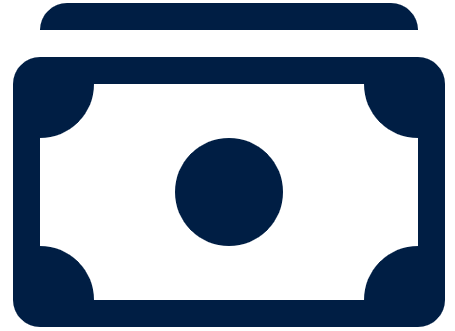
Reduce inequality within and among countries
This multi-pronged goal includes targets related to income growth, inclusion, policies, migrants, and meeting the needs of developing countries. The targets include income growth of the bottom 40 per cent of the population; social, economic and political inclusion; equal opportunity and reduced inequalities of outcome (laws, policies and practices); the adoption of fiscal, wage and social protection policies; improving regulation and monitoring of global financial markets and institutions; orderly, safe, regular and responsible migration and mobility of people; enhanced representation and voice and the implementation of the principle of special and differential treatment for developing countries; and, encouraging official development assistance and financial flows to where the need is greatest. More information about this goal can be found in the Targets & Indicators section below.

Source: SciVal.com | This word cloud was created using publications from Penn State researchers
Related News
Anti-apartheid hero and scholar Mamphela Ramphele visiting Penn State
Mamphela Ramphele, a world-renowned activist, medical doctor, academic and political thinker, will visit Penn State Oct. 9-11 for a series of discussions, class engagements and talks focused on her work advocating for social justice, human [...]
Penn State to celebrate Indigenous Peoples Day with events Oct. 9-10
Indigenous Peoples Day will be celebrated at Penn State with events on Monday, Oct. 9, and Tuesday, Oct. 10. The Indigenous Peoples' Student Association and the Indigenous Faculty and Staff Association, in partnership with the [...]
$2.5 million gift to solidify vibrant future at Penn State Hillel
As Penn State Hillel advances its mission to enrich the lives of the roughly 5,000 Jewish students at the University, longtime philanthropist Inge Marcus has stepped forward with a new gift to name the executive [...]
New grants support projects centered on racial justice, cultural initiatives
The Penn State College of Arts and Architecture recently announced the recipients of three new grant programs that support the college’s strategic plan: Racial Justice, Anti-Discrimination and Democratic Practices; Rusinko Kakos Culture Change; and Rusinko Kakos [...]
Targets & Indicators
Target 10.1: By 2030, progressively achieve and sustain income growth of the bottom 40 per cent of the population at a rate higher than the national average
- Indicator 10.1.1: Growth rates of household expenditure or income per capita among the bottom 40 per cent of the population and the total population
Target 10.2: By 2030, empower and promote the social, economic and political inclusion of all, irrespective of age, sex, disability, race, ethnicity, origin, religion or economic or other status
- Indicator 10.2.1: Proportion of people living below 50 per cent of median income, by sex, age and persons with disabilities
Target 10.3: Ensure equal opportunity and reduce inequalities of outcome, including by eliminating discriminatory laws, policies and practices and promoting appropriate legislation, policies and action in this regard
- Indicator 10.3.1: Proportion of population reporting having personally felt discriminated against or harassed in the previous 12 months on the basis of a ground of discrimination prohibited under international human rights law
Target 10.4: Adopt policies, especially fiscal, wage and social protection policies, and progressively achieve greater equality
- Indicator 10.4.1: Labor share of GDP
- Indicator 10.4.2: Redistributive impact of fiscal policy
Target 10.5: Improve the regulation and monitoring of global financial markets and institutions and strengthen the implementation of such regulations
Target 10.6: Ensure enhanced representation and voice for developing countries in decision-making in global international economic and financial institutions in order to deliver more effective, credible, accountable and legitimate institutions
- Indicator 10.6.1: Proportion of members and voting rights of developing countries in international organizations
Target 10.7: Facilitate orderly, safe, regular and responsible migration and mobility of people, including through the implementation of planned and well-managed migration policies
- Indicator 10.7.1: Recruitment cost borne by employee as a proportion of monthly income earned in country of destination
- Indicator 10.7.2: Number of countries with migration policies that facilitate orderly, safe, regular and responsible migration and mobility of people
- Indicator 10.7.3: Number of people who died or disappeared in the process of migration towards an international destination
- Indicator 10.7.4: Proportion of the population who are refugees, by country of origin
Target 10.a: Implement the principle of special and differential treatment for developing countries, in particular least developed countries, in accordance with World Trade Organization agreements
- Indicator 10.a.1: Proportion of tariff lines applied to imports from least developed countries and developing countries with zero-tariff
Target 10.b: Encourage official development assistance and financial flows, including foreign direct investment, to States where the need is greatest, in particular least developed countries, African countries, small island developing States and landlocked developing countries, in accordance with their national plans and programs
- Indicator 10.b.1: Total resource flows for development, by recipient and donor countries and type of flow (e.g. official development assistance, foreign direct investment and other flows)
Target 10.c: By 2030, reduce to less than 3 per cent the transaction costs of migrant remittances and eliminate remittance corridors with costs higher than 5 per cent
- Indicator 10.c.1: Remittance costs as a proportion of the amount remitted






